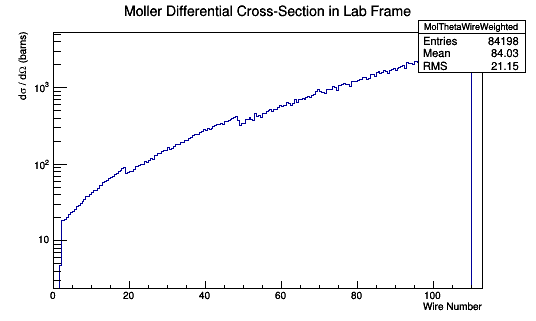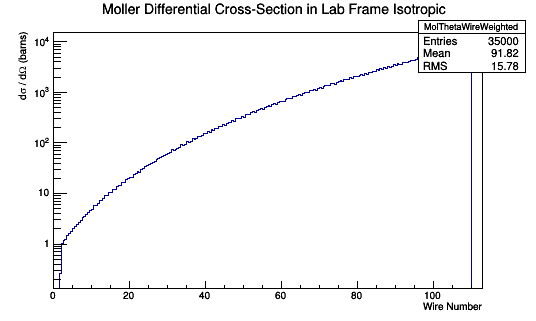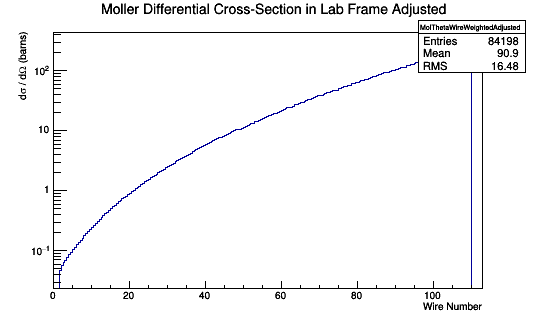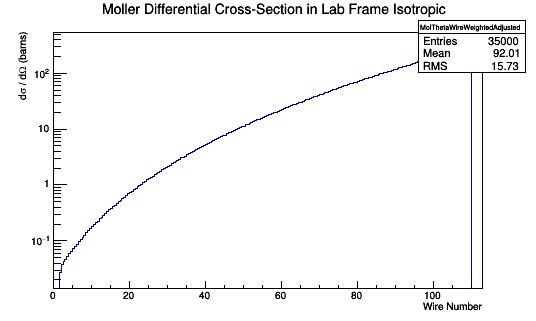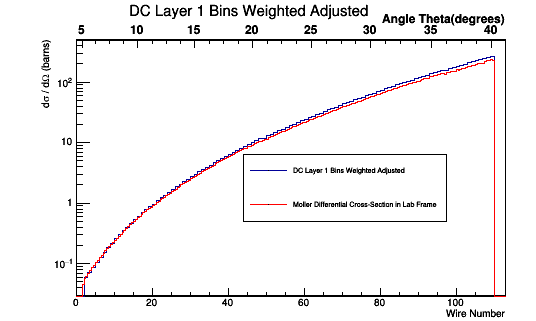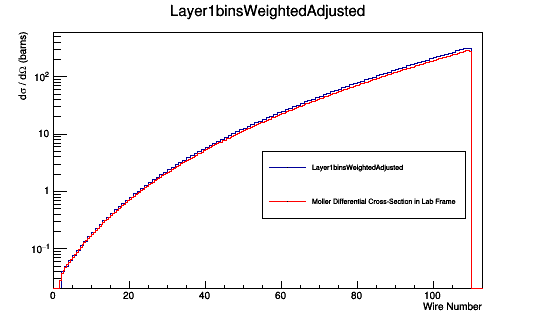Difference between revisions of "DC Binning Based On Wire Numbers"
| Line 27: | Line 27: | ||
We will use the polynomial fit for the expression of theta as a function of the wire number | We will use the polynomial fit for the expression of theta as a function of the wire number | ||
| − | <center><math>\theta_{n}=4.93253 +0.297371 n+0.000566298 n^2-3.04016 | + | <center><math>\theta_{n}=4.93253 +0.297371 n+0.000566298 n^2-3.04016 \times 10^{-6} n^3</math></center> |
Revision as of 15:08, 25 May 2017
DC Binning Based on Wire Numbers
The bin size based on wire number will need to be a uniform width of 1, as in an increment of 1 between the integer values of the wires. This uniformity in bin size based on wire numbers is not uniform when viewed by the angle theta due to the Drift Chamber geometry discussed earlier.
Modifying evio2root.cc
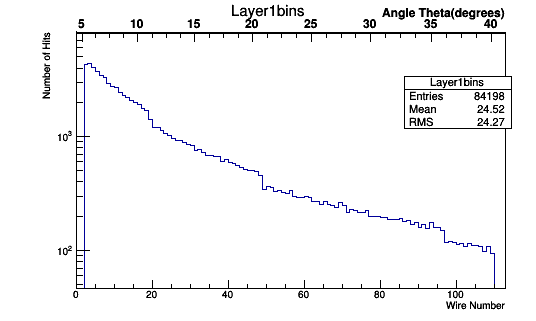
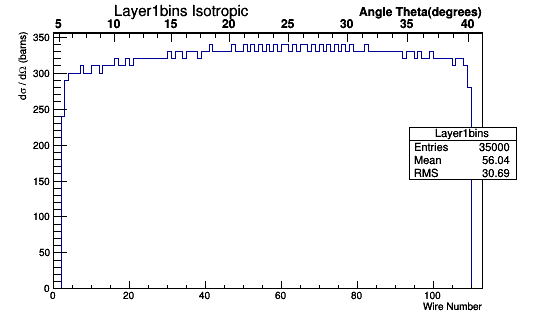
The corresponding theta scale can be superimposed over the bin plot using the minimum and maximum angles
We will use the polynomial fit for the expression of theta as a function of the wire number
gStyle->SetStripDecimals(kTRUE);
TF1 *fit_function=new TF1("fit_function","[0]+[1]*x+[2]*x*x+[3]*x*x*x",5.23,41.07);
fit_function->SetParameters(4.93253,0.297371,0.000566298,-.00000304016);
TGaxis *A1 = new TGaxis(0,5000,113,5000,"fit_function",510,"-");
A1->SetTitle("Angle Theta(degrees)");
A1->Draw();
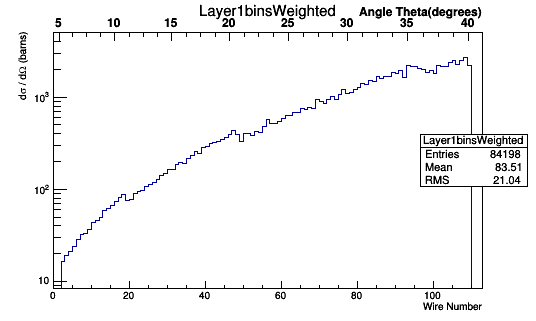
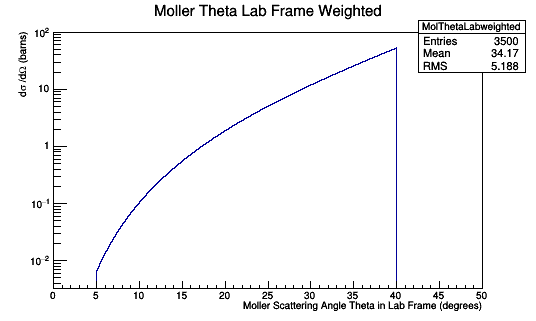
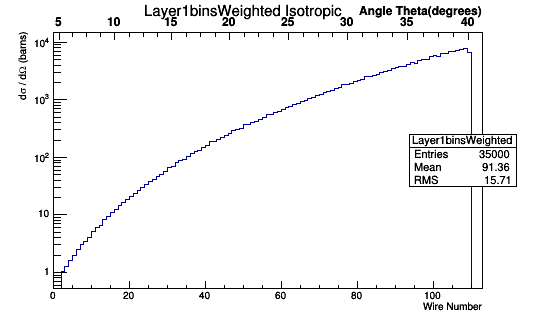
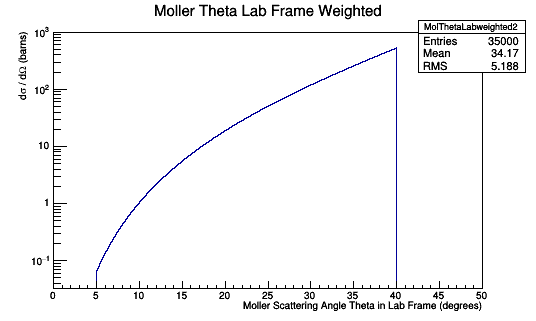
Using the expression for n in terms of Theta:
This relationship can be used to multiply each Moller Scattering angle theta in the lab frame, with it's differential cross-section weight, to find the Moller differential cross-section as a function of wire number in the lab frame.
